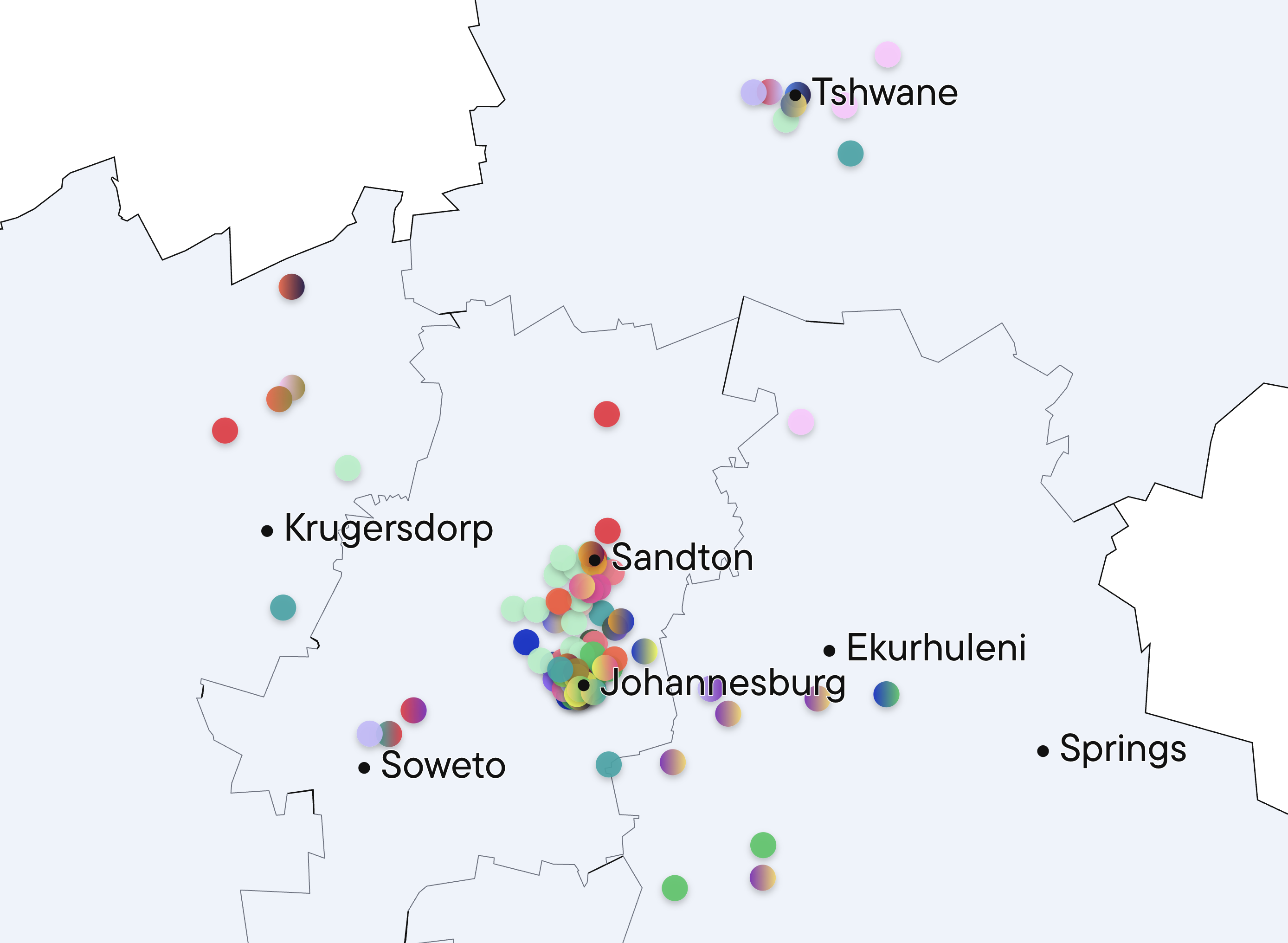
Overview Study for the Creative
Industries Sector in Gauteng
Presented by Independent Network for Contemporary Culture & Art (INCCA)
Contributions by
Sarah de Villiers
Lara Koseff
Londi Modiko
Nape Senong
Commissioned by the Inclusive Economies Research Programme (IERP), a strategic collaboration between the Gauteng City-Region Observatory (GCRO) and the Gauteng Department of Economic Development (GDED).
View a map created as part of the project here.
Presented by Independent Network for Contemporary Culture & Art (INCCA)
Contributions by
Sarah de Villiers
Lara Koseff
Londi Modiko
Nape Senong
Commissioned by the Inclusive Economies Research Programme (IERP), a strategic collaboration between the Gauteng City-Region Observatory (GCRO) and the Gauteng Department of Economic Development (GDED).
View a map created as part of the project here.
Throughout 2024, INCCA conducted research for the Inclusive Economies Research Programme (IERP), a strategic collaboration between the Gauteng City-Region Observatory (GCRO) and the Gauteng Department of Economic Development (GDED).
As part of the programme, extensive research was carried out on six critical sectors: Information and Communications Technology (ICT) and digital services, agro-processing, tourism, creative industries, freight and logistics, and the automotive sector. These studies aimed to assess the current landscape, identify challenges, and explore opportunities within each sector to inform policy and program development.
In our research, we assessed the state of Gauteng Province’s creative industries sector, which is one of the priority sectors that is noted within a range of government publications due to its remarkable potential to contribute to the economy, community development and urban regeneration. What is classified broadly as the Cultural and Creative Industries (CCIs) has been noted by the South African Cultural Observatory (SACO) as being equivalent to agriculture in its representation within South Africa’s total economic production. This study honed in on the commercial, for-profit, creative industries sector, as described by UNESCO (2009) as well as the inevitable overlaps with the traditionally recognised cultural occupations and industries.
Through studying existing data and government publications, our research provides a detailed market analysis, employment and skills profile and technological landscape, defining sector specifics and relevant sub-sectors and analysing policies, regulations and frameworks. Much of the research conducted here indicates that the reach and importance of the creative industries sector is vast and extensively embedded within the broader economy, even if sometimes not directly acknowledged — and contributes to enormous symbolic and economic value that the Gauteng Province is and can further invest into.
In addition, through qualitative research in the form of interviews with over 20 stakeholders and informants, our research provides insight into various viewpoints from those working and invested in the CCIs in Gauteng Province in numerous capacities. The stakeholders work within, across and specialise in various domains and sub-sectors in the CCIs including audio-visual and interactive media (film, animation, VFX, gaming, VR and AR); visual arts (fine arts and photography); craft; design (fashion and graphic design); books; performance (music and performing arts); culture and natural heritage, architecture and urban development, as well as Government employees in various departments and professionals that cover various or more than one domain, sector or sub-sector.
As part of the programme, extensive research was carried out on six critical sectors: Information and Communications Technology (ICT) and digital services, agro-processing, tourism, creative industries, freight and logistics, and the automotive sector. These studies aimed to assess the current landscape, identify challenges, and explore opportunities within each sector to inform policy and program development.
In our research, we assessed the state of Gauteng Province’s creative industries sector, which is one of the priority sectors that is noted within a range of government publications due to its remarkable potential to contribute to the economy, community development and urban regeneration. What is classified broadly as the Cultural and Creative Industries (CCIs) has been noted by the South African Cultural Observatory (SACO) as being equivalent to agriculture in its representation within South Africa’s total economic production. This study honed in on the commercial, for-profit, creative industries sector, as described by UNESCO (2009) as well as the inevitable overlaps with the traditionally recognised cultural occupations and industries.
Through studying existing data and government publications, our research provides a detailed market analysis, employment and skills profile and technological landscape, defining sector specifics and relevant sub-sectors and analysing policies, regulations and frameworks. Much of the research conducted here indicates that the reach and importance of the creative industries sector is vast and extensively embedded within the broader economy, even if sometimes not directly acknowledged — and contributes to enormous symbolic and economic value that the Gauteng Province is and can further invest into.
In addition, through qualitative research in the form of interviews with over 20 stakeholders and informants, our research provides insight into various viewpoints from those working and invested in the CCIs in Gauteng Province in numerous capacities. The stakeholders work within, across and specialise in various domains and sub-sectors in the CCIs including audio-visual and interactive media (film, animation, VFX, gaming, VR and AR); visual arts (fine arts and photography); craft; design (fashion and graphic design); books; performance (music and performing arts); culture and natural heritage, architecture and urban development, as well as Government employees in various departments and professionals that cover various or more than one domain, sector or sub-sector.